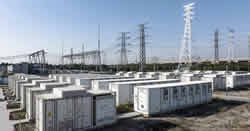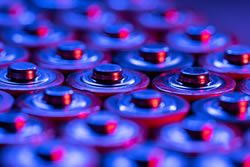What Are the Inherent Risks of BESS Sites, and How Can Operators Overcome Them?
Battery Energy Storage Systems (BESS) are revolutionizing the way we power our world, acting as the source that keeps renewable energy flowing even when the sun isn't shining or the wind isn't blowing.
Reducing the Risk of Battery Thermal Runaway
One solution to reducing the risk of a battery fire are infrared cameras. Infrared fire detection systems monitor large areas and are able to detect heat releasing from battery packs or single batteries.
The Importance of Infrared Fire Detection Systems for EV Battery Fires
In this article, we will delve into how companies can mitigate the risks associated with EV battery fires by incorporating advanced infrared fire detection systems, such as those provided by MoviTHERM.
Rooftop Solar's Unspoken Truth: Fires and Safety Risks are Uncomfortably Common
Due to inconsistent installation practices, intense manufacturer competition, and sometimes conflicting motives between Operations and Maintenance (O&M) providers and end-owners, the risk of fires looming on rooftop installations is uncomfortably common.
Utility Technology Already Exists for Preventing Wildfires
By deploying a series of low-cost sensors on poles, wires, and more, the company can track parts of the grid that might be at risk for failure. This can help prevent the sorts of catastrophic accidents that could cause devastating wildfires.
Understanding Wind Turbine Fire Protection
A whopping 90% or more of wind turbine fires originate in the nacelle. The nacelle contains the gear box, the generator, the controller, the low- and high-speed shafts, and the brake-and it (the nacelle) sits atop the tower.
What You Need to Know About Energy Storage System Fire Protection
When dealing with any form of energy and its storage, there is always some degree of risk with an associated hazard involved. With PSH, there is a risk that the containment could fail producing the hazard of cascading water rushing through the surrounding area.
Records 1 to 7 of 7
Featured Product
OMCO Origin® Factory-Direct Trackers
A One-In-Portrait (1P) solution that support a wide range of solar projects (utility scale, distributed generation (DG), & C&I markets). Manufactured and factory preassembled in the USA at one of OMCO Solar's 5 US plants (AZ, IN, AL, OH), OMCO makes all structural components with domestic steel and now can offer a 100% domestic tracker. OMCO Origin® Factory-Direct Trackers include universal module mounts with options for all commercially available modules, labor-saving bearings with 6 adjustable ways to compensate for posts and terrain issues, and foundation solutions for every terrain including OMCO C Piles.





.jpg)

